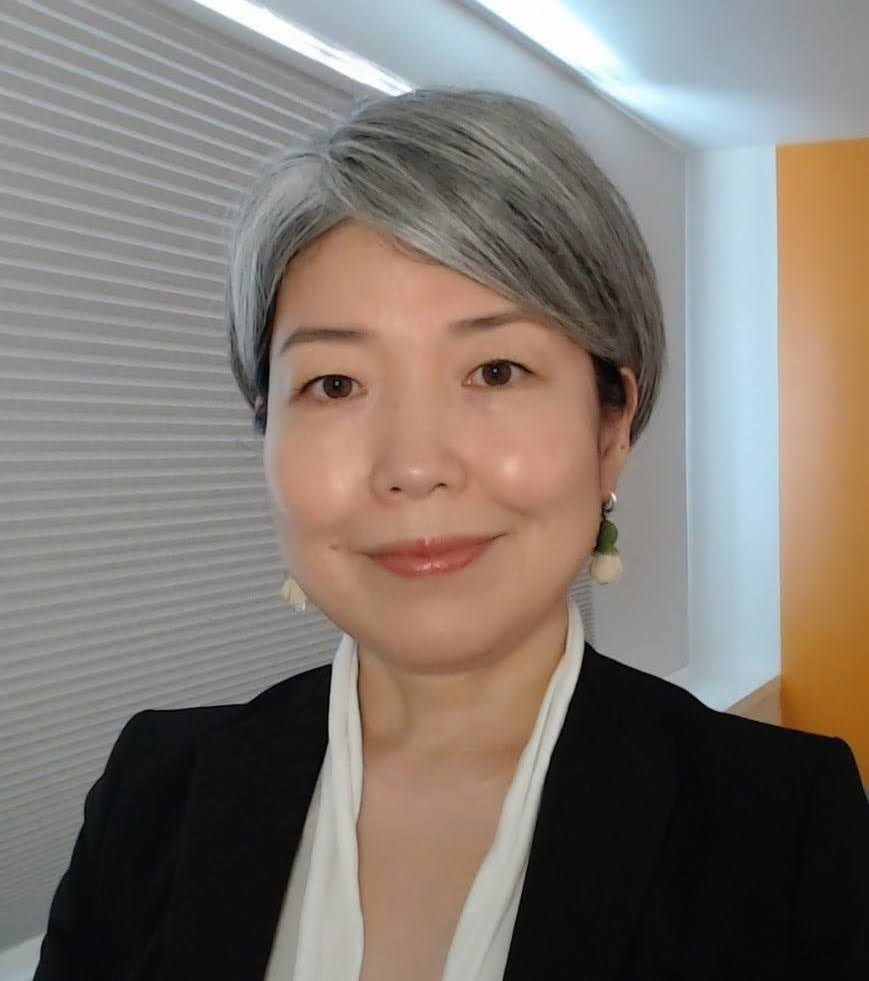対談・講演記録
Diana Khor (Executive Trustee) × Kuniko Yasutake(Intercultural Communication Specialist, United States)
対談・講演記録Diversity Training and Intercultural Competencies
Khor:Let us start with your current work. You provide consultation to various organizations to improve employees’ intercultural competencies. You provide DEI (Diversity, Equity, and Inclusion) training. You do training, workshops, and coaching. Could you explain each of these?
Yasutake:First, I want to go with the bigger picture and explain how I define and offer training, workshops, and coaching. Let me start with intercultural competencies and diversity. Those are not separate concepts. I believe there are multiple ways to offer diversity training: training that focuses on diversity CONTENT and diversity PROCESS. In the traditional diversity training offered in the US, participants were trained to become aware of a certain group of people in the US, about systematic racism or injustice around various cultural groups. Participants would be presented with those diversity contents - WHAT they needed to know to become aware.
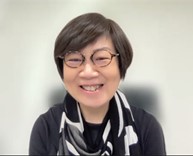
Diana Khor
Yasutake:Focusing on diversity process allows participants to recognize that we are all different, and we need to learn about practicing diversity and inclusion efforts, and promote equity in our services. My approach is to integrate intercultural competencies into learning of domestic diversity issues in the U.S. The general consensus (among the U.S. higher education and consulting industry) was that cross-cultural training is for an international audience and is about how we could help them adjust and engage better with people in participant’s target culture in a foreign country. But you can also do cross-cultural training with a focus on the domestic diversity process. HOW you could better engage with people and turn the knowledge and awareness about target culture and target audience into practice.
My specialty is intercultural communication and engagement.
In training, my focus is not just awareness, or talking about Asian-Americans or LGBTQ community, or any. Rather, I focus on the process. I always wondered if it’s possible to do diversity training for people living in an ethnically-homogenous environment, like Japan.
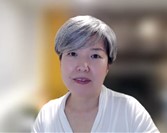
Kuniko Yasutake
Yasutake:When I started my business in 2005, people in the consulting field and higher education told me that my approach was not going to work. “You cannot cross cross-cultural communication and diversity issues.” But I proved it works. I have been doing it for 17 years. My approach is introducing intercultural competencies and the skill to better communicate, better engage, work better with people coming from different backgrounds in the conversation about domestic diversity issues.
Regarding the difference between training, workshops, and coaching, training and workshops are done for a group of people. Training is more (about) active learning, skill-building sessions where a group of people participate in simulation games, exercises, time to reflect. I might introduce theories or concepts for them to make a connection between what we have done in the training and practice at work. That is skill-building focused. I provide new information, new experience, and then together we explore.
Workshops are for a group of people who might have done my session or training previously. Or in pre-consultation, I learn that this group has done other training, probably diversity-content focused - Sometimes people come and say, “As a manager, I know how to better engage with new hires and other employees, but for some reasons, this time I am having a challenge building a positive office culture, and I want you to come in to problem solve.”
So workshops are like, okay everyone, so what shall we do? We talk about the challenges, generate goals. Or workshops could be something about the mediation of two groups of employees not working well together. “We all speak English but we do not get along. Why?” I come in to help them solve the problem and find direction.
Coaching can be for a group or an individual. It is geared towards the individual needs of mid-level, senior level managers. “I am having difficulty with this group of employees. I do not know how to manage them better.” “Can you refresh my memory and help me come up with the action plan?” The most important thing in my services is that I do not lecture. Because I believe that knowing what to do does not necessarily mean that you are going to see that happening in real life. So I involve people’s voices in the session (to customize their learning experiences.)
Khor:People have told you that it will not work in Japan. However, I understand that you also provide service to Japanese clients. What adjustments do you make, if any, in your approach?
Yasutake:I am aware that the concept of diversity training is fairly new to people in Japan. Last year, I was in Japan for 4 months, and I heard “diversity” from not just media, but also young people. Some middle schoolers, high schoolers asking me how Americans were learning about SDGs? I thought, “So learning about diversity is happening in Japan!”
The traditional type of diversity training, content-focus and awareness-focus, boomed in the US in the 1980s. It was more for corporate training. It has its roots in the 1960s: the women’s studies and ethnic studies. If I am to offer training to the Japanese audience, mostly business people in Japan, I need to scaffold. We cannot copy what is currently done in the US and ask Japanese trainees to do it. It does not work. You need to back-pedal to help everybody understand why diversity training and inclusion are important. Living in Japan, you might think (diversity) is not about your life, but it really matters why we need to focus on equity.
In Japan, we often do not discuss at the corporate level, or even at schools, the connection between prejudice and discrimination. So this is one training I have done; this project is still going on. I am partnering with IBIS Consulting Group, in Massachusetts. We are working with multinational organizations. The US headquarter would like to do unconscious bias training. There is a set of training that worked for their US-based employees. But for the Japanese, I have to dig a little bit deeper on the definition of diversity.
It is not about black people, white people. Let us step back and spend time for everybody to reflect on what diversity means to them. Then have them visualize the connection between prejudice and discrimination. This is done virtually, using the online whiteboard. But not expressing in words, but by drawing a diagram, and show that we visualize the relationship of prejudice and discrimination differently. And now as a team, we understand the perspective differences. This activity is not included in the US version, but we need to scaffold. We need to go bite-size (in learning) for Japanese audience.

Khor:About 20 years ago, there were a number of high profile sexual harassment cases in Japan. Therefore, in the training or workshops, there was a focus on what not to do, and say follow the rules and so on. I felt at that time that it was not going to work. But you started with getting them to think about what diversity is.
Yasutake:Up to maybe 1990s or early 2000s, a lot of people thought in diversity training, “I am going to learn what not to do, and how to be nice.” But that does not work, I agree with you. Hence, it is more creative and more proactive to learn about how you could delay judgment, and also learn practical intercultural methods that include facilitating a meeting that ends on time, involving people’s voices, etc.
Khor:Do you think that through these workshops and training, people can be trained to acquire intercultural competencies?
Yasutake:I would say yes, but not by me but by themselves. In the U.S., there might be participants older than me thinking, “I have done diversity training and it does not work.” Younger people might say, “Whom are we going to learn about this time?” But in my session, we start with each participant. Let us learn how complicated you are. Often the people who had not wanted to come to my training would say, “I actually enjoyed learning about myself.” Since I do not lecture, I give them activities, exercise questions, make them pause and think. They say, “I actually have a better understanding of my complicated cultural self!” When you do that, you build new perspectives. People want to practice that perspective switching in real life. That intrinsic motivation help them become open to talk about issues at work. Diversity learning is a process. It is not correct to think that you have spent 3 or 4 hours with me, so you are trained, and you are good to go. Rather, I offer a moment to reflect. They can take ownership of the learning. That is the key. That is why I said they can be trained, but not by me but by themselves.
Khor:How would you define intercultural competencies, if you were asked to do so?
Yasutake:It is a skill. Sometimes people have it intuitively. But it is a skill to better communicate and better engage with people from different backgrounds. The only lecture part in my session is, “Let us define culture,” because people have different definitions. There is no one definition of culture, race, or ethnicity. My method is to dial back, “So tell me how you define culture.” Start from there, hear participants’ words, and then we define culture and build consensus. That is a practice of equity. The consensus among people is hard to come by. We practice during the session. We build upon small successes and model how to build consensus. That is my approach.
Khor:What type of clients do you have in Japan?
Yasutake:My projects in Japan are through my partner, IBIS Consulting Group. There was a project on e-learning tool for Microsoft for people to do online interactive trainings. This was way before the pandemic. I helped to contextualize the translation and sequence of the session on the e-learning tool, and to make sure that all the language and presentation appeal to the Microsoft employees in Japan, and that it does not look too foreign.
Another project I am working on is for Edgewell, a company based in the US. They have branch offices in Latin America, Asia, Japan, across the world. They wanted to provide interactive virtual diversity training focused on unconscious bias at work. Last fall, we rolled out a global plan for the Edgewell group. We are moving to a coaching model this year so that their DEI efforts are sustainable. I help Japanese employees in the company to have dialog and train with their employees.
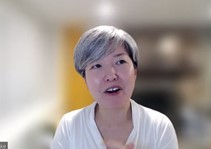
Khor:Do your clients ask for more focused type of training, for example, focusing on LGBTQ people?
Yasutake:If they say, “I want you to do culture-specific training,” I tell them, “I am not the one you need,” and I refer them to other people. Sometimes US-based organizations come when they have issues like there is a conflict within the organization and the culture became toxic. Sometimes it is we would like to improve our new employee orientation. But I do not offer cultural diversity content looking at a specific group, and I am upfront about it.
Khor:Have you done any work with university people?
Yasutake:Yes and no. I got a position as a lecturer at the University of Massachusetts, Dartmouth’s Charlton College of Business. I did not work with faculty members, but I did a training series for Brown University students. There were casual coaching type conversations with faculty members, but I have not done traditional training or workshops.
Khor:Would it be something that you would be interested in doing? We have administrative staff in the university as well.
Yasutake:Yes, educational administrators! One time my doctor asked me, “Do you think you can train doctors?” I said I can, and that I have coached medical doctors and midwives. Interestingly, since what I offer is not about a specific group, it is about diversity process, what I offer is so versatile. I can fit into any group.
Khor:When you were a student at Hosei University, did you imagine that this would be the career you would develop?
Yasutake:I thought I would like to do something with diversity issues. Another thing I thought was it might be nice to work for young people and to use English to do the job. Those are the vague ideas I had.
Khor:What motivated you to study abroad as an undergraduate student?
Yasutake:I wanted to study African-American studies as I started to learn about how ethnically diverse communities function. Since kindergarten, I was interested in studying abroad. Before I entered Hosei, somebody told me Hosei had great scholarship. I chose Hosei aiming for the scholarship. Before I entered Hosei, I had not done enough research to see if there was any researcher at the Department of Social Sciences who could teach me African-American life experience. It turned out there was none. That motivated me to get the scholarship. UC Davis back in 1994 was one of the partner universities of Hosei, and UC Davis had African-American studies. That is how I motivated myself.
Khor:From there, it wasn’t a difficult decision to go to graduate school, I guess?
Yasutake:It was. Studying abroad itself (at UC Davis) was difficult. I became sick soon after I arrived in the U.S. At the end of my study abroad, I thought I could not study as hard as I had thought because of my disease. I remember sitting outside one of the classroom buildings thinking, “Is there anything that I learnt?” I thought what I learnt was “it is okay to be different.” The basis of it is I learnt there was diversity even within African-American people. Somebody was super dark, with very prominent African facial structure, while somebody might have complete fair skin, blue eyes, blonde. I thought there exists diversity even in one ethnic group, and it is okay to be different.
I asked myself, “What do I do with the learning that it is okay to be different?” I made a connection with my observation of young people in Japan versus UC Davis’ undergraduate students. US and Japanese students find their voices differently in the college classrooms. So I thought I needed to learn about educational reform. If I engage in reforming education in Japan, I needed to learn how cross-cultural training, diversity issues are taught and practiced in the secondary education in the U.S. How do American youth learn it is okay to be different? Then I realized my bachelor’s degree was not enough. I needed to do a graduate study. Right after Hosei, I worked for Japan-US Educational Commission. I pitched my idea to Fulbright scholars, researchers, lecturers, journalists. I said I want to train people using cross-cultural training methods to talk about diversity issues. Everybody told me, “You need to go to graduate school.” “You need to go to University of Minnesota.” Then I had to fund myself. Through another scholarship, I got into the graduate school.
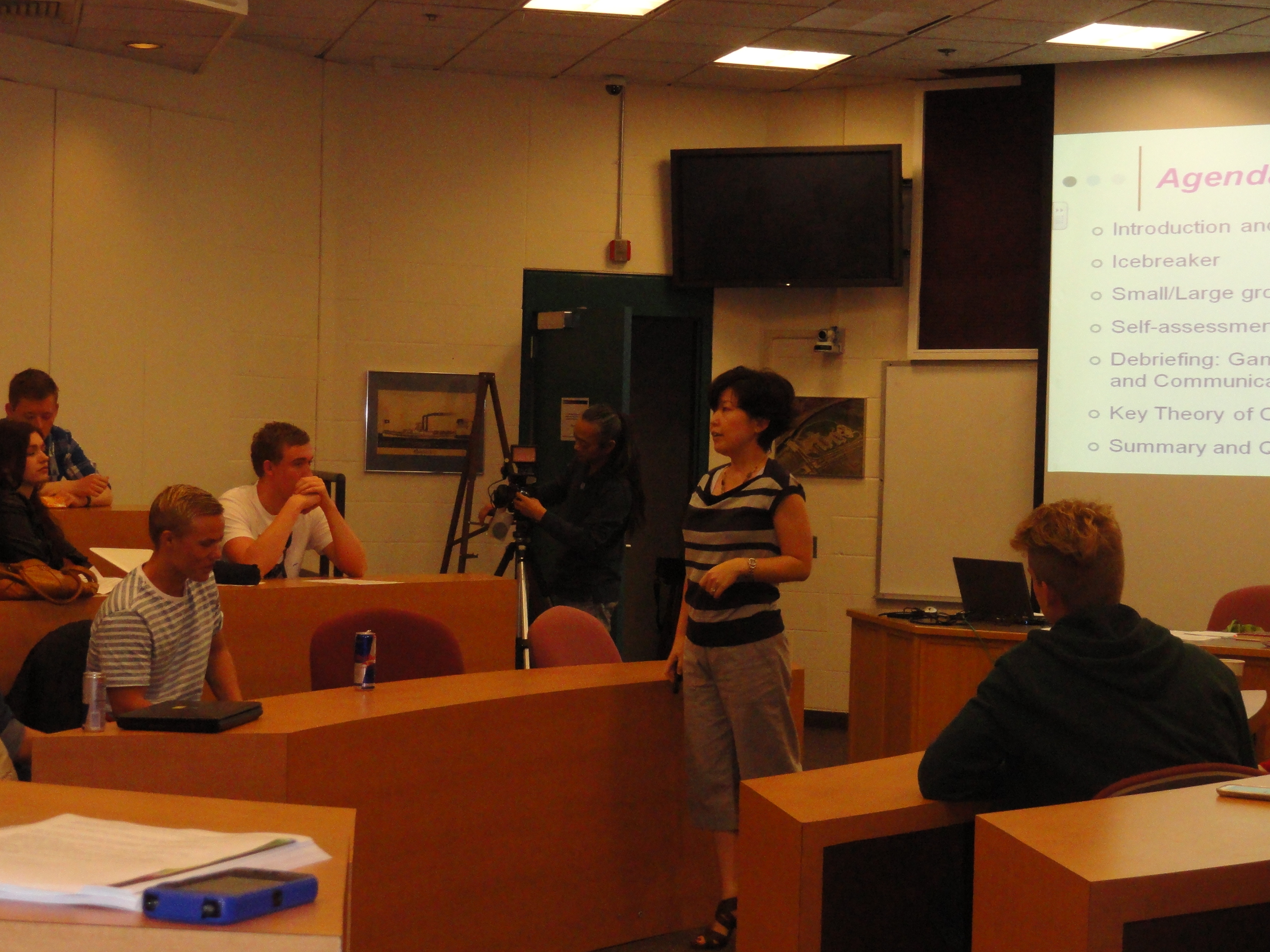
Kuni Yasutake at work
Khor:You have stayed in the States since then?
Yasutake:Yes.
Khor:We started off with talking about intercultural competencies. When we talk about diversity, we also talk about globalization, even in Japan. What would be your take on global mindset, if you were to define it?
Yasutake:It is a mindset that acknowledges that we are living in a world with multiple sets of common sense. You do not have to know all the details about all cultures, but be aware that you all work with multiple sets of common sense. It is connected to ethnorelativism, Milton Bennett’s theory. Ethnorelative is to know that there are multiple ways to do things. Not just knowing that, but rather you need to practice those multiple approaches. To have a global mindset, switching perspectives is necessary; switching perspective from your common sense to other people’s common senses. It is a combination of awareness of multiple sets of common sense everywhere, even within one ethnic group.
Khor:As a teacher, I always want students to first take a position. It is good to be open to different perspectives, but ultimately, it would be you adjudicating among all the different perspectives.
Do you think that at times students drift because they just tag on to others, not having their own thoughts? Do you think there would be a risk of that happening based on your experiences?
Yasutake:If you are not listening to your own voice, I think it could happen not just to young people, but to anybody. We need to tell the young people, or people of any age group, if you are not paying attention to your inner voice when you make a decision, then you might be disoriented by so many choices. I am not saying you should always go with your gut feeling. Rather, at least knowing what you actually think is good. Explore what would be a healthy practice for you, and understand where that voice is coming from. Sometimes, the things that you hear over and over could be coming from somebody that you do not like. So it’s important to identify where that internal voice is coming from and what it says. We can invite people to learn how to listen, it is one fundamental core step of talking about diversity.
Khor:Let us finish with talking something big. What is your vision of a truly diverse world?
Yasutake:My internal voice says… Based on my experience, I believe the answer would be a society or community that is full of second chances. A truly diverse world, a truly inclusive office, or a model of equitable practice of student management/patient management/staff management is not an end product. It is a process. Leaders and followers need to be included in the process of always checking whose voice is missing in operations - “My way is not the only way because we are working with multiple common senses.” So it needs to be a continuous sustainable process of change. But the thing is, when you are in the process trying new things, you would not know how is all turns out until you practice your idea, and you might fail. When that happens, we cannot say, “You failed in DEI. Please go away.” That does not encourage people to explore DEI ever. We can still learn from failure. Diversity training evolved in the U.S. over time through trials and errors. The world should be saying to those who experienced DEI challenges, “We will give you a second chance.” Hence, I believe that diverse world is full of second chances.

Khor:This is beautifully crafted. Do you have a message for our students?
Yasutake:I would like to say, choose to be a truth seeker. Based on the family culture, national culture, neighborhood culture, or school culture, you build, over time, your value system: what true practice is. So there is a chance that your personal value judgement could be formed by other people’s ideas. I would like everyone to practice to be a truth seeker. Not simply believing in what you thought was the (only) truth. Rather choose to be a truth seeker and seek what is true practice for this group or classroom. What is true for me at this university? If you encourage yourself to seek multiple truths, you get to enjoy seeing things from multiple perspectives.
Khor:On that note, let us close our dialog for now, and pick it up again some other time.
Kuniko (Kuni) Yasutake
Since 2005, Kuni has been offering action-oriented diversity training and professional coaching services designed to improve productivity of organizational members at all levels. Her projects supported community-based organizations, schools, healthcare providers, governmental offices, and small businesses in New England as well as global corporations in Japan and the U.S. Prior to her consulting career, Kuni gained significant insight into the challenges of multicultural workforce via her work experience in various industries such as international educational administration, international food trade, and k-12 US public education. Her sessions include those real-life examples to illustrate evidence-based concepts/theories of diversity, equity and inclusion in organizational operations. Kuni is a Principal Consultant/Co-founder of PAPTAKE Consulting (RI, USA,) and Senior Consultant at Ibis Consulting Group (MA, USA.)
Master of Art's degree from the University of Minnesota, Twin Cities, School of Educational Policy and Administration (Comparative and International Educational Development) on a Rotary International Ambassadorial Scholarship (District 2580). While enrolled in the Faculty of Social Sciences at Hosei University, she studied as an Outgoing Student Exchange Scholar at the University of California, Davis, African-American Studies. She has teaching experience at the Univ. of Massachusetts, Dartmouth Business School. Born in Tokyo, Japan, and currently resides in Rhode Island.
